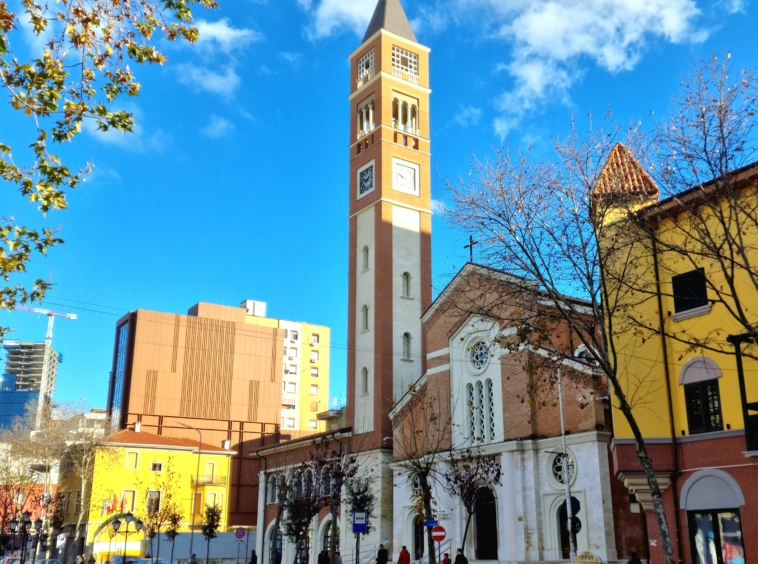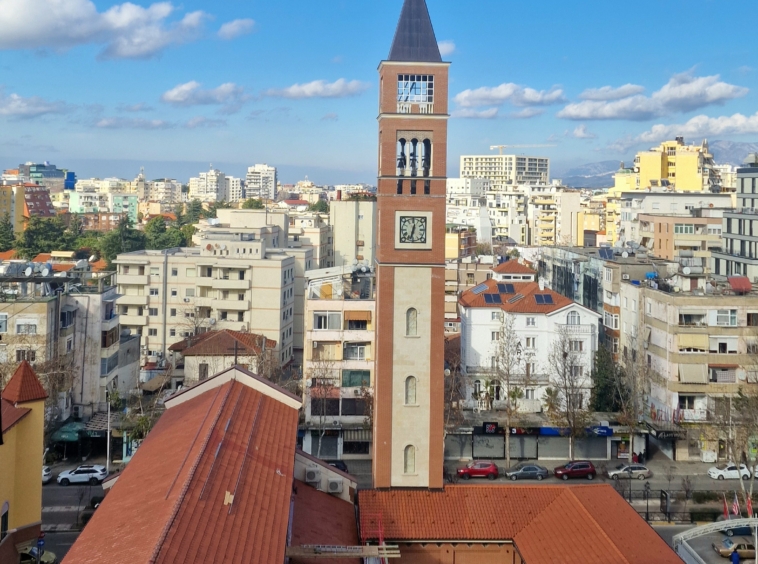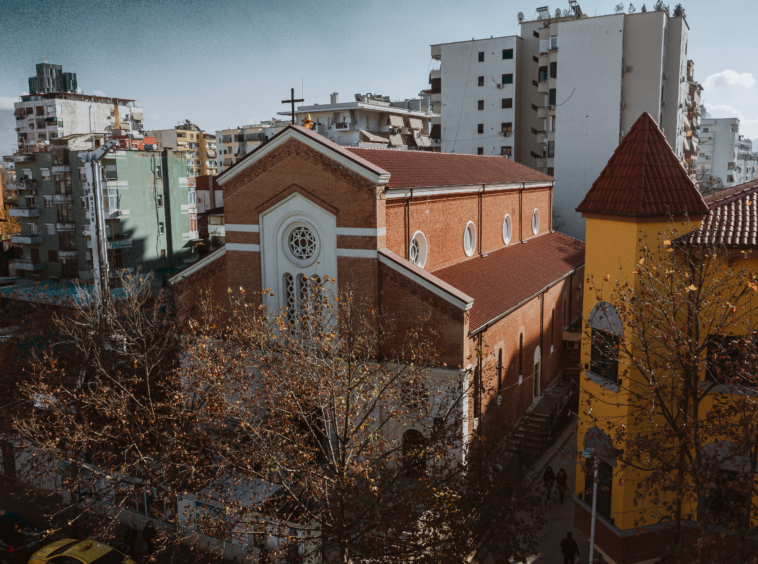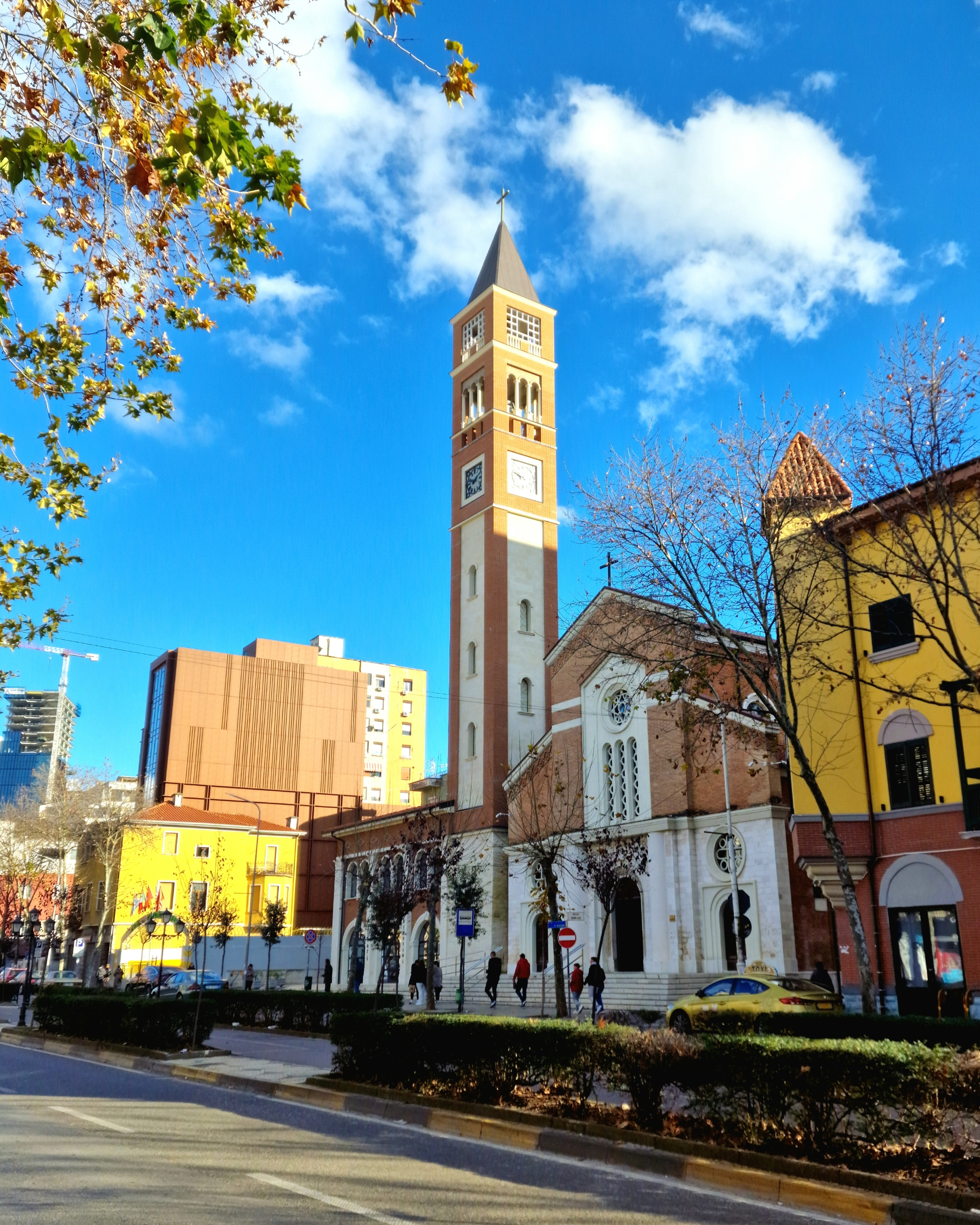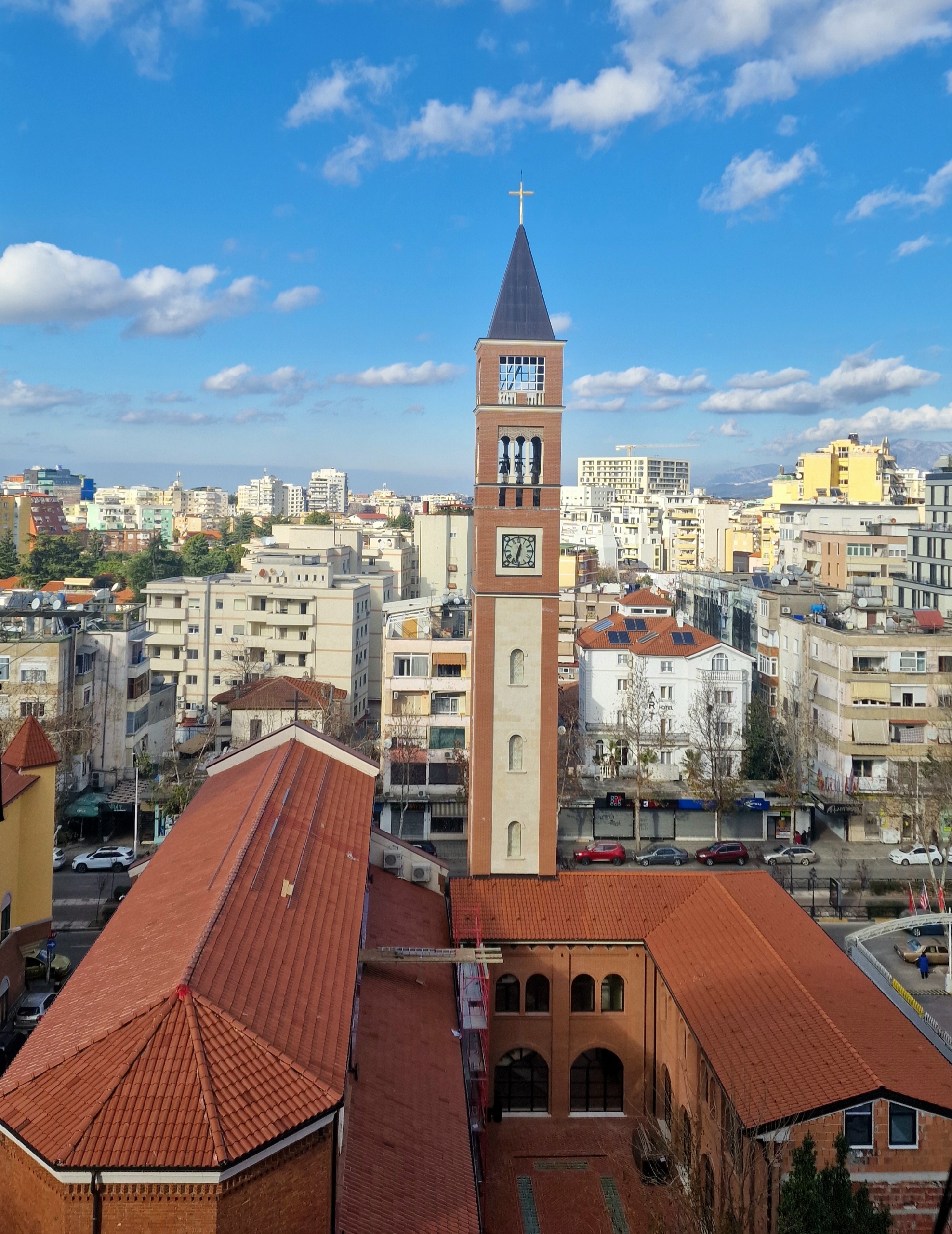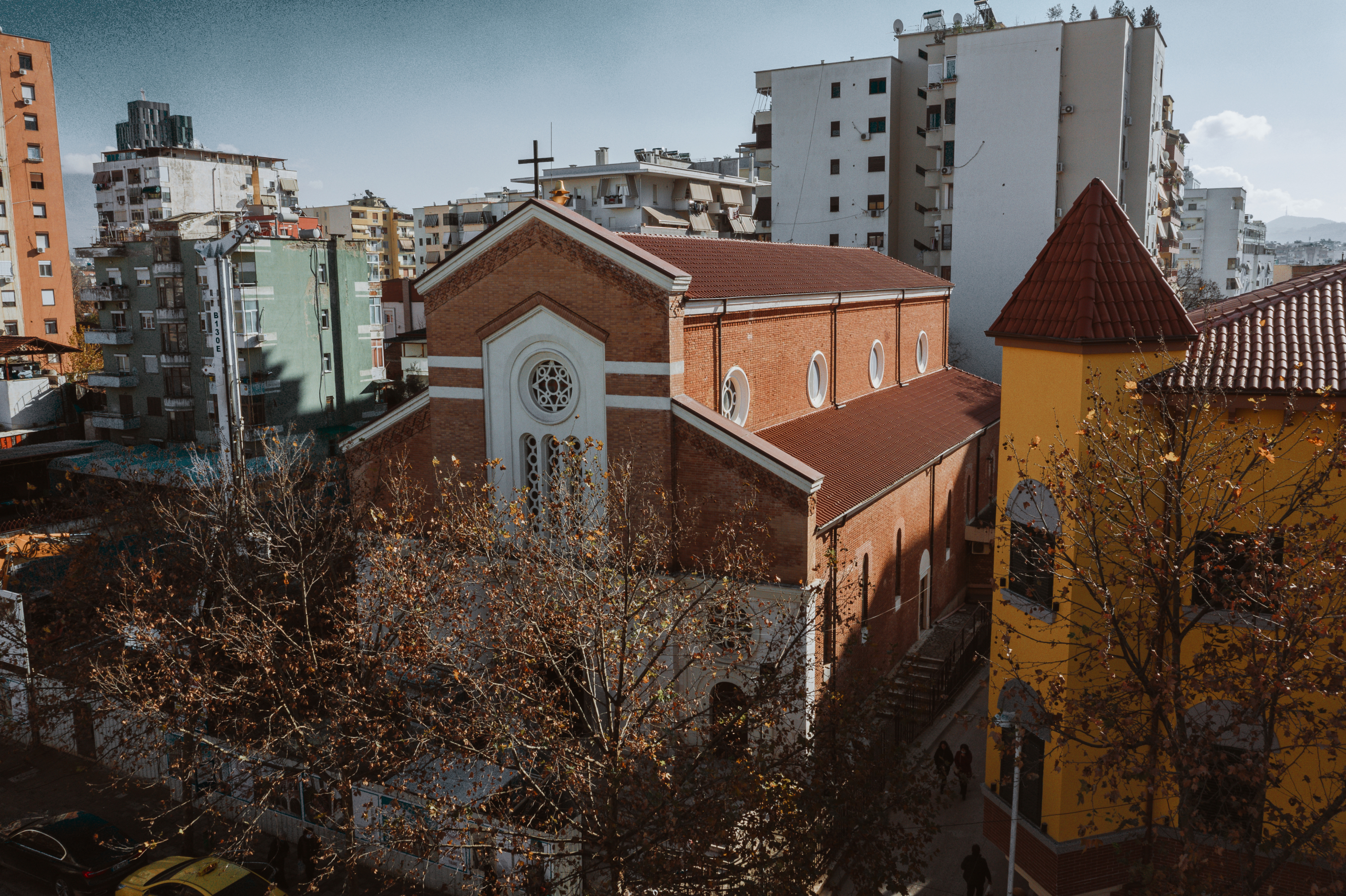Church of the Sacred Heart of Christ
Details
Updated on January 3, 2025 at 7:46 pmInformation
- Author: Giovanni Santi; ArchiSpace
- Year Built: 1938–1939; 2024
Description
The Church of the Sacred Heart of Christ is a historically significant and architecturally distinct religious structure located in Tirana, Albania. It reflects Albania’s cultural and spiritual history, marked by resilience and transformation, while standing as an enduring symbol of faith.
Historical Overview
Construction of the church began in 1938 and was completed in time for its inauguration during the Christmas holidays of 1939. Designed by the Italian architect Giovanni Santi, the church embodies the Neo-Romanesque style of the 20th century, incorporating traditional and Byzantine-inspired elements into its design.
The church served as the main Catholic place of worship in Tirana until the construction of St. Paul’s Cathedral in 2002, which took over as the city’s principal Catholic church.
Architectural Features
- Neo-Romanesque Design:
The church showcases a basilica-style layout, with three naves separated by elegant arches, a hallmark of Romanesque architecture. Its symmetrical form and restrained decorative elements highlight its solemn and spiritual purpose. - Byzantine-Style Altar:
The altar, a prominent feature of the church, reflects Byzantine influences and was a gift from Pope Pius XII, further emphasizing the church’s connection to the wider Catholic community. - Incomplete Features:
The original design included a belfry as well as office and residential premises, but these elements were never realized, leaving the church with a more simplified profile.
Transformations During Communism
In 1967, under the communist regime’s policy of banning religious practices, the church was closed and repurposed as a cinema named Rinia (Youth). Significant alterations were made to its structure, including the addition of a double-screen rectangular wall to the façade, masking its religious identity.
Restoration Efforts
With the return of religious freedoms in the 1990s, efforts to restore the Church of the Sacred Heart of Christ included plans to revive the clock tower as part of the church’s original architectural vision. Restoration focused on preserving the integrity of Giovanni Santi’s design while integrating modern techniques and materials to ensure durability.
The clock mechanism, absent during the communist era, was either restored or replaced with a modern equivalent, ensuring its functional and aesthetic contribution to the structure. The tower’s upper section, originally intended to house the clock face, was reconstructed with attention to its Neo-Romanesque detailing, including arches and decorative stonework, to align with the overall architectural style of the church.
Significance of the Restoration
The completion and restoration of the clock tower not only enhanced the church’s architectural profile but also symbolized the spiritual and cultural renewal of Albania’s Catholic community. It serves as a reminder of the church’s resilience and its enduring place in Tirana’s urban and spiritual landscape.
Today, the clock tower stands as a fully integrated and functional element of the Church of the Sacred Heart of Christ, harmonizing with the restored façade and interior frescoes. Its rhythmic chimes mark the passage of time, connecting the faithful with a sense of continuity and tradition.
Legacy and Current Status
Although it lost its status as Tirana’s primary Catholic church with the construction of St. Paul’s Cathedral in 2002, the Church of the Sacred Heart of Christ remains an important religious and cultural landmark. Its history encapsulates the trials and triumphs of Albania’s Catholic community, from its suppression under communism to its restoration in the democratic era.
Significance
The church stands as a testament to architectural beauty, spiritual devotion, and cultural resilience. It continues to serve as a place of worship and a historical reminder of the challenges faced by Albania’s religious communities throughout the 20th century.

